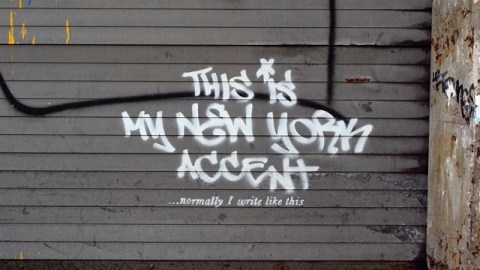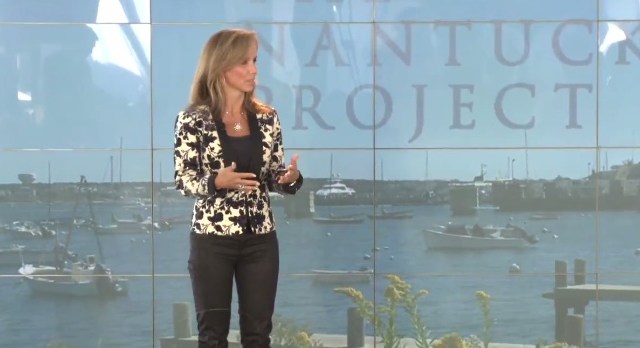Can Contemporary Art Become Too Popular?

Contemporary art, believe it or not, is hot. When comedian Stephen Colbert “begs” British graffiti artist Banksynot to make the walls of his studio’s building the next target in his Better Out Than In series (aka, “Banksy Takes Manhattan”) and instantly send property values skyrocketing, you know that contemporary art’s hit the mainstream. But is this popularity a good thing? In a preview of the London Frieze Art Fair,The Financial Times’ Peter Aspden weighs the pluses and minuses of contemporary art’s current status. Admittedly, the popularity of and financial investment in contemporary art beats the alternative, but, as Aspden points out, “it’s hard to deny that in its quest for instant accessibility, contemporary art has lost something of the sense of purpose that it enjoyed when it was genuinely pushing at the boundaries of moral and social consensus.” Aspen believes that the public more willingly swallows contemporary art because “it is so easily consumed and digested.” Should the contemporary art world be choking on its own success? Can contemporary art become too popular?
Aspden focuses mainly on the London art scene, but the phenomenon he recognizes goes global. Banksy’s traversing the Atlantic to stage the month-long Better Out Than In series speaks more about his desire to conquer new worlds and rake in more cash than any kind of cultural outreach. Works such as This Is My New York Accent … Normally I Write Like This (shown above) raise an amused chuckle, perhaps, but fail to start any kind of cultural stir, as underground art forms such as graffiti once claimed to do. The piece itself jokes at what’s lost in translation when someone steps outside their customary cultural circle, but what’s really lost in translation might be the enlivening edginess of art that Aspden alludes to. Banksy even set up a web site for fans to visit to find his latest works—a stroke of shameless self-marketing that some might argue continues the long tradition of artists such as Gustave Courbet. But where Courbet could proclaim himself “the most arrogant man in France,” Banksy’s online proclamations contain less of the arrogance of cutting-edge art and more of the old school commercialism art once condemned.
Jeff Koons and Damien Hirst—the twin towers of commercialized contemporary art—make their requisite appearances in Aspden’s piece, of course. Aspden marvelously details all the lowlights of the past few decades of contemporary art and points fingers at the Tate museums and Guggenheims for their complicity in the simultaneous popularizing and dumbing down of contemporary art. Like so many art forms that challenge the status quo, contemporary art shifted from contempt to collaboration to complacency—an evolution accelerated by financial reward—and thus became part of the very status quo they once resisted. Aspden draws an interesting connection between contemporary popular music and contemporary art. “The ruinous decline of pop music over the past couple of decades is one of the reasons for the rising interest in visual art,” Aspden argues. “Art stars became the new rock stars.” But a renaissance in popular music paralleling contemporary art’s decline in edginess might “mark the beginning of a redressing of the balance.” The rise of the Beliebers may have created a generation of new believers in visual and performance art, but contemporary art’s betrayal of that belief by selling out may be tipping the scales back towards music.
Aspden sees some hope for contemporary art in his humorous “survival guide” for those braving the London Frieze Art Fair. Go forth, he advocates, and look at the work done by young artists who inhabit the world beyond the fairs and festivals. Go forth and look at the work of artists from the Middle East and China, where the status quo of oppression still compels artists to challenge rather than assimilate. Go forth and look at the work of the Old Masters, the contemporary art of the past, and revisit what art challenging us to be better and bolder looks like. Avoid, according to Aspden, today’s ubiquitous “Pop-ups–restaurants, shops, galleries,” which he calls “the most potent symbol of the Attention Deficit Disorder age.” It’s a great thing that people are paying attention to a contemporary art world where new Banksys can pop up overnight, but we must guard against that attention leading to a deficiency of the mind and the soul.
[Image:Banksy. This Is My New York Accent … Normally I Write Like This, 2013. Part of the Better Out Than In series. Located at 508 West 25th Street, Westside, New York City, NY.]
[Follow me on Twitter (@BobDPictureThis) and Facebook (Art Blog By Bob).]





